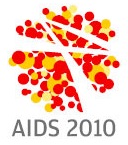PrEP mit Tenofovir gut verträglich. Wenigstens das. (FR LB C102)
In dieser kleinen Studie wurde über die Verträglichkeit von Tenofovir berichtet, das 186 Männern im Rahmen einer PrEP Studie verabreicht wurde. Die Verträglichkeit von Tenofovir war gut, verlgleichbar mit Placebo. Die Männer nahmen jeden Tag eine Tablette Tenofovir (resp. Placebo).
Preliminary analysis of biomedical data from the phase II clinical safety trial of tenofovir disoproxil fumarate (TDF) for HIV-1 pre-exposure prophylaxis (PrEP) among U.S. men who have sex with men (MSM)
L. Grohskopf1, R. Gvetadze2, S. Pathak2, B. O’Hara2, K. Mayer3, A. Liu4, K. Chillag1, S. Buchbinder4, M. Ackers1, L. Paxton1, B. Collins2, M. Thompson5
1Centers for Disease Control and Prevention, Atlanta, United States, 2Northrop Grumman, Inc., Atlanta, United States, 3Fenway Community Health, Boston, United States, 4San Francisco Department of Public Health, San Francisco, United States, 5AIDS Research Consortium of Atlanta, Atlanta, United States
Background: Animal studies suggest PrEP may protect against HIV acquisition. This double-blinded randomized trial evaluated clinical and behavioral safety of daily oral TDF among HIV-1 negative MSM in Atlanta, San Francisco, and Boston.
Methods: HIV-1 negative men reporting anal sex with another man in the past year were randomized to initiate once-daily TDF (300mg) or placebo at enrollment or after a 9-month delay. Quarterly visits included HIV testing, risk-reduction counseling, and assessments of biomedical and behavioral safety, adherence, and acceptability. Bone density (DEXA) was assessed in San Francisco.
Results: From February 2005 through July 2007, 400 men (median age 39 years) enrolled; 373 initiated study drug (TDF or placebo). Seventy-three percent were white, 15% African American, 4% Asian/Pacific Islander; 9% were Hispanic. Treatment-emergent adverse events are summarized below.
| Adverse event (n of participants) | TDF (n=186) | Placebo (n=187) | p |
| Creatinine increase >= 0.5 mg/dL from baseline | 2 (1.1%) | 6 (3.2%) | 0.28 |
| Grade 3 or 4 hypophosphatemia | 0 | 5 (2.6%) | 0.06 |
| Any grade 3 or 4 adverse event (clinical or lab) | 19 (10%) | 17 (9.1%) | 0.73 |
[Table 1]
No grade 3 or 4 creatinine elevations were observed. A total of 27 protocol-defined serious adverse events occurred, 16 on TDF and 11 on placebo (p=0.56). Among 186 San Francisco participants who had DEXA scans, 11 discontinued drug (per protocol) for >5% decrease in bone density (total hip or spine) from baseline (8[8%] on TDF, 3[3%] on placebo; p=0.21). Seven participants became HIV infected; four were placebo recipients (including one seronegative at enrolment but subsequently found to be acutely infected); three were in the delayed arm and seroconverted before starting study drug.
Conclusions: No significant biomedical safety issues were identified. This study was not designed to detect efficacy of TDF in preventing HIV infection. Adequately powered efficacy trials are underway to address this question.
Links:
- Grohskopf, et.a. – FRLBC102
- Slides mit Audio (nicht vorhanden)
- Präsentation (.ppt) (nicht vorhanden)
